Myanmar scholars have a tough time! The appalling lack of ‘Myanmar consciousness’ of the Indian mainstream media, especially the English print media, is reflected by the near total absence of the coverage of the visit of His Excellency U Win Myint, the 10th President of the Republic of the Union of Myanmar, at least on Day One of the four day visit to Delhi, Agra and Bodh Gaya. The common citizen can be forgiven for missing out the visit, coming in the post-mortem phase of the Trump’s sojourn to India and amidst the violence in Delhi, but one cannot condone Foreign Affairs Editors of the dailies in the national capital for this blind spot. Myanmar watchers were saved by regular tweets from Embassy of India, Yangon, the Rashtrapati Bhawan and Raveesh Kumar, Spokesperson, Ministry of External Affairs.
Background
This is the second visit by the Myanmar President in a year, the first being from 30 - 31 May 2019 to attend the Swearing-in Ceremony of the Prime Minister Modi for the second term. The 26 member delegation this time includes, apart from the President and the First Lady, U Kyaw Tin, Union Minister for International Cooperation, Thura U Aung Ko, Union Minister for Religious Affairs and Culture, U Thant Sin Maung, Union Minister for Transportation and Communication, U Nyi Pu, Chief Minister of Rakhine State and Director Generals from the Protocol Department, Political Department, Oil and Gas Planning Department amongst others. The visit is a bilateral one initiated by an invitation from Indian President Shri Ram Nath Kovind.
President Win Myint, a geologist by education and a lawyer by profession, has served in both the High Court and the Supreme Court. He was involved in the 8th August 1988 (8888) Revolution and was imprisoned till 1990. A native of Ayeyarwady Region, he was elected from Danyubu Township in 1990 elections in which eventually the results were annulled by the Junta. Winning the 2012 by-elections he entered the Pyithu Hluttaw (Lower House i.e. House of Representatives) from the Pathein constituency. From the Indian perspective, Pathein is significant due to the large Hindi speaking population there and the trade and business potential of the Pathein port. This port is allegedly as good as the Yangon port, however, due to better intra land connectivity to Mandalay and the rest of Myanmar, this port suffers. Currently, due to congestion of the Yangon Port, Pathein is regaining importance.
In the 2015 general elections he was elected as Lower House MP for Tamwe Township in Yangon. From 2016 to 2018, he was Speaker of the Lower House. He was selected as a National League for Democracy (NLD) candidate for Presidency after incumbent U Htin Kyaw resigned due ill health. He defeated Union Solidarity and Development Party's candidate 273 votes to 27 for Vice Presidency, a pre-requisite for Presidency. Finally he was elected President on 28 March 2018, with 403 out of 636 lawmakers voting for him. In one of his first major decisions post elections, he released 8,500 prisoners, including 51 foreigners and 36 political prisoners on 17 April 2018 as a general amnesty.
The official part of the visit has concluded with the release of the Joint Statement and the signing and exchange of ten1 Memoranda of Understanding (MoU):-

These agreements and MoUs cover medical, agriculture, education, wildlife conservation, petroleum, security and electricity sectors. What is significant is that four of these projects are related to the most disturbed Rakhine State where two crises are concurrently under way; the Rohingya Crisis and the ethnic Rakhine Crisis involving the Arakan Army. Of the three townships named, Buthedaung is a Rohingya Township, Mrauk U is the proposed headquarters of the Arakan Army to be established as part of the ‘Arakan Dream 2020’ and both these places have witnessed tremendous violence. Gwa is the southernmost township in Rakhine. In addition, five unnamed townships will have solar lighting systems. Analysing the spread of the projects, one can appreciate the factors for selection of the townships as being the ones most affected by violence, and hence needing maximum assistance. This region has seen the construction of 250 houses funded by India, as also distribution of relief material in keeping with the true spirit of assistance to Myanmar.
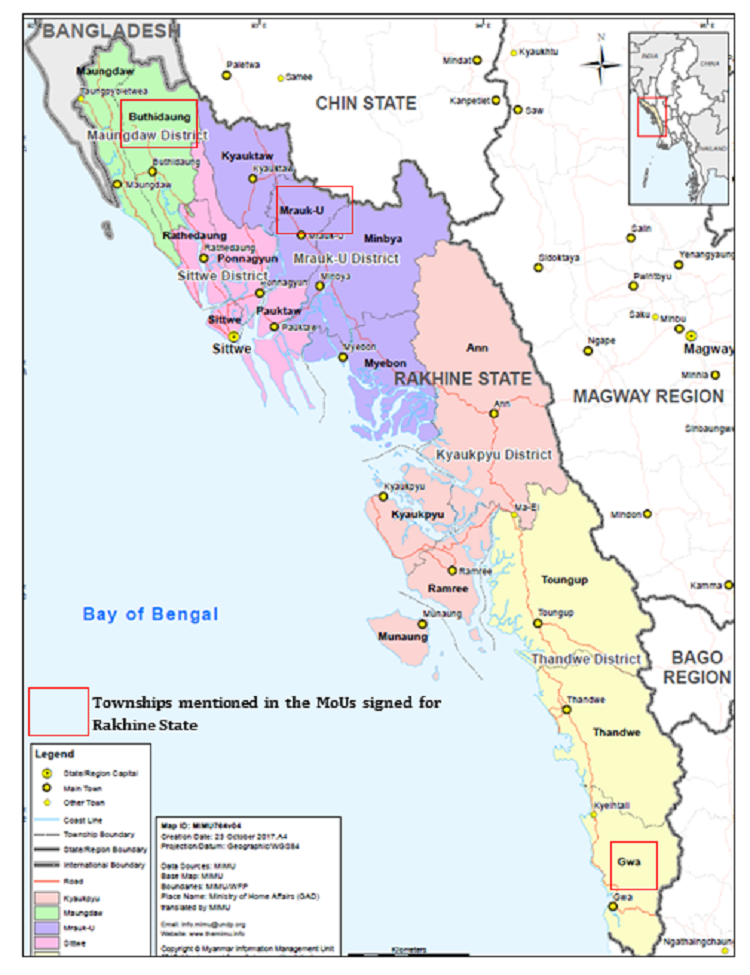
Source: (c) Myanmar Information Management Unit Map, modified by author (c) Vivekananda International Foundation
The other projects covered specific areas of assistance required by Myanmar. The QIPs are low cost, small-scale projects to be implemented quickly to meet the needs of locals. These are executed through local administration, NGOs and CSOs. It also helps build their management capacities of the locals.2
Joint Statement
The Joint Statement first appeared on the Ministry of Foreign Affairs, Nya Pyi Taw Facebook Page. 3 It made the following points:
- Visit reinforced the tradition of high-level interactions, symbolizing the strong friendly relations existing between the two neighbours.
- Leaders discussed a wide range of bilateral, regional and international issues of common interest. They emphasized that regular high-level interactions have added momentum to the bilateral relations.
- They welcomed the synergies between Myanmar’s independent, active and non-aligned foreign policy and India’s ‘Act East’ and ‘Neighbourhood First’ policies, and reaffirmed their commitments to further strengthen partnership, explore new avenues of cooperation in order to expand bilateral relations for the mutual benefit of the two countries and peoples.
- Reiterated their mutual respect for the already- demarcated portion of the boundary between the two countries and affirmed their commitments to settle pending issues through the existing bilateral mechanisms, such as the Joint Boundary Working Group Meeting.
- The two sides emphasized the centrality of connectivity in their relationship and reaffirmed their commitments to expedite the completion of the various India-funded projects presently underway in Myanmar, with Myanmar’s continued support and facilitation towards its execution.
- Welcoming the opening of the two land border crossing points at Tamu-Moreh and Rihkhawdar-Zowkhawthar as international border gates, they noted the need to further facilitate the easy movement of passengers and cargo traffic by streamlining procedures and expeditiously developing infrastructure.
- Indian side reiterated its commitment towards the construction of the modern Integrated Check Post as Phase-I at Tamu, Myanmar. Both sides agreed to work together for the earliest commencement of the project.
- Two sides committed to the early conclusion of discussions on the pending bilateral Motor Vehicles Agreement to facilitate cross border movement of vehicles. In this context, both sides welcomed the MoU between their respective private operators to launch a Coordinated Bus Service between Imphal and Mandalay by 7 April 2020.
- Both sides agreed to commence the establishment of the border haats, with a priority to carry out a pilot project, which was previously agreed by both sides in accordance with the MoU signed in 2012. The two sides look forward to setting up of border haats after finalizing the mutually agreed Mode of Operation.
- Both sides also expressed satisfaction at the success of the Myanmar-India Border Area Development Programmes in providing infrastructure and socio-economic development in Chin State and Naga Self-Administered Region through the Indian grant-in-aid projects. Under this, 43 schools, 18 health centres and 51 bridges and roads have been constructed in the above areas over the last three years. Both sides acknowledged with satisfaction that 29 additional projects under the 4th year’s tranche of assistance of US$ 5 million, will be implemented in 2020-21.
- Both leaders took note of the positive developments related to the Sittwe Port and the Kaladan Multi Modal Transit Transport Project. They welcomed the appointment, since 1 February 2020, of a Port Operator to operate and maintain the Sittwe Port and Paletwa Inland Water Transport Terminal and associated facilities.
- Both sides also reaffirmed their commitment to the early completion of the Paletwa-Zorinpui road – the final leg of the Kaladan project.
- India appreciated Myanmar’s cooperation and efforts in facilitating the movement of project personnel, construction material and equipment for the construction of the road component of Kaladan Multi Modal Transit Transport Project across the Mizoram border through Zorinpui southwards to Paletwa.
- The two leaders took positive note of the progress of work on Kalewa - Yargyi road section of the Trilateral Highway, the work on which is expected to be completed by 2021. India reiterated its commitment to the early upgradation of the 69 bridges on the trilateral highway, with Myanmar agreeing to facilitate towards this.
- Both sides agreed to jointly make flagship projects such as Myanmar Institute of Information and Technology (MIIT) and Advanced Centre for Agricultural Research and Education (ACARE) sustainable on a long-term basis.
- India reaffirmed its support for the recent steps taken by the Government of Myanmar to address the challenges in Northern Rakhine. India also expressed its support for the bilateral agreements signed between Myanmar and Bangladesh for the voluntary, sustainable and speedy repatriation of the displaced persons from Rakhine State currently in Cox’s Bazar and hoped that Myanmar and Bangladesh would continue to work together in accordance with their bilateral agreements. The Myanmar side thanked India for its understanding of the complexity of the issue and for all its supports extended to Myanmar.
- Both sides acknowledged the role which the Myanmar-India Industrial Training Centres at Pakokku and Myingyan, established with Indian grant assistance, are imparting skills to Myanmar youth to enhance their employability. They noted efforts to build two new Centres at Monywa and Thaton which are progressing well.
- Both leaders looked forward to the earliest implementation of upgradation the Women’s Police Training Centre at Yamethin after finalization of modalities of the project.
- Both sides agreed to expedite the implementation of a set of 12 projects under the second phase of the Rakhine State Development Programme and to further strengthen their development cooperation within the frameworks of High Impact Community Development Projects and Quick Impact Projects under the Mekong-Ganga Cooperation mechanism.
- India also expressed its support for the bilateral agreements signed between Myanmar and Bangladesh for the repatriation of the displaced personsfrom Rakhine State and hoped that Myanmar and Bangladesh would continue to work together for voluntary, sustainable and speedy repatriation of displaced people currently in Cox’s Bazar to Myanmar in accordance with their bilateral agreements.
- The two sides noted the need to make efforts to enhance bilateral trade and economic engagement to their full potential. They noted that steps such as improving connectivity, market access, easing financial transactions, facilitating business-to-business connect and enabling bilateral and regional trading agreements would contribute to socio-economic development of both sides.
- Both sides agreed to work together to enable the launch of Indian RuPay Card in Myanmar at the earliest, noting that National Payment Corporation of India (NPCI) needs to adhere to Myanmar laws and regulations and that the launch of RuPay Card would stimulate the economy of Myanmar and facilitate tourism and business from India.
- The two sides also agreed to explore the creation of an India-Myanmar digital payment gateway which would help expand options for cross border remittance between the two countries. They also expressed interest in exploring a bilateral mechanism for settlement in local currency with the aim to boost cross border trade. In this regard, the two sides agreed to expeditiously convene the existing mechanism of India-Myanmar Joint Trade Committee meetings.
- India and Myanmar agreed to cooperate in the field of petroleum products, inter alia, for cooperation in refining, stockpiling, blending and retails through a Government-to-Government Memorandum of Understanding. Both sides agreed to encourage and facilitate cooperation among oil and gas companies of India and Myanmar for development of petroleum products, including enhancing trade and investments in this area. Both sides welcomed investment by Indian Oil and Gas Public Sector Undertakings (PSUs) in Myanmar’s upstream sector and agreed that efforts would be made to explore opportunities for exporting to India the petroleum products so produced from such projects where investments have been made by Indian Oil and Gas Public Sector Undertakings (PSUs).
- Both sides reiterated that defence and security cooperation remains one of the key pillars of Myanmar-India bilateral relations. They commended the positive momentum in exchanging visits of defence personnel.
- The two leaders acknowledged that the MoU on Defence cooperation, signed in July 2019, has set the path for closer cooperation. The Indian side reiterated its commitment to assist Myanmar in the capacity building of the Myanmar Defence Services and enhance cooperation to address mutual security concerns. Both sides reiterated their commitment to peace and stability along the border areas in order to promote the prosperity of the local people, the two countries and the region. They reiterated their commitment of not allowing any negative elements to use their respective soil for hostile activities against the other side.
- The two leaders welcomed the enhanced maritime cooperation between the two countries. They also recognized the importance of addressing maritime challenges and strengthening maritime security. Both leaders acknowledged that signing of the MoU on Maritime Security Cooperation (MSC), conduct of a first meeting of the Joint Working Group (JWG) in September 2019 and commencement of exchange of white shipping data as important steps in the area.
- Two sides agreed to continue negotiations on various pending treaties such as the Mutual Legal Assistance Treaty on Civil and Commercial Matters and the Extradition Treaty. They reiterated their commitment for an early conclusion of these. India welcomed the decision by Myanmar to extend Tourist Visa-on-Arrival for Indian citizens in Myanmar till December 2020.
- The Myanmar side appreciated India's offer of providing medical radiation equipment "Bhabhatron-2" for treatment of cancer patients. Both sides agreed to further strengthen cooperation in healthcare sector.
- The two sides expressed satisfaction over the various ongoing trainings, capacity building programmes, exposure visits and lecture series offered by India for Myanmar civil servants, sportsmen, parliamentarians, judicial and electoral officers and security personnel. India announced the extension of its National Knowledge Network (NKN) to Myanmar Universities. The Indian side also reiterated its readiness to support Myanmar in the establishment of the Myanmar Diplomatic Academy. Myanmar also noted with thanks India’s offer of providing technical assistance to the national ID project of Myanmar, based on India’s “Aadhar” project.
- The Prime Minister of India expressed full support for Myanmar’s peace process, which is being pursued through a dialogue between the Government, Military and Ethnic Armed Groups under the Nationwide Ceasefire Agreement framework. Both leaders underlined the importance of stability and peace in pursuing the shared national goal of development in the region.
- The two sides agreed to continue their close cooperation at international fora such as the United Nations (UN) and other international organizations. The two sides also agreed to cooperate within other regional frameworks such as ASEAN, BIMSTEC, Mekong-Ganga Cooperation. Myanmar reiterated its support for India’s efforts to become a permanent member of an expanded and reformed UN Security Council.
- Myanmar committed to take necessary steps to ratify the amendment to the Framework Agreement of the International Solar Alliance (ISA) at an early date, as part of an effort to enable all UN Member States to join the ISA and advance cooperation in the field of solar energy.
- India reiterated the relevance of the Coalition of Disaster Resilient Infrastructure (CDRI) for disaster prone countries like India and Myanmar and encouraged Myanmar to consider joining the CDRI.
- India welcomed the inclusion of Bagan in the list of UNESCO World Heritage Sites. The two sides welcomed the commencement of a first phase of work by Archaeological Survey of India (ASI) to restore and conserve 12 pagodas under the first phase of a project to restore and conserve 92 earthquake-damaged pagodas in Bagan. Myanmar agreed to extend all necessary support to the ASI team, for undertaking this preservation work.
- Both sides reiterated their strong commitment to further consolidate friendly and amicable bilateral ties between the two countries and agreed to intensify engagements at all levels.
Analyses
The scale, scope and spread of the engagement between the two countries is slowly, but surely, increasing. This suggests that as far as reach goes, India’s quiet diplomacy strategy using soft power is gaining traction in fulfilling the needs of the nascent democracy in those aspects in which it most needs help. These projects, if implemented in a timely manner by the Indian government, will have a far greater positive impact on the Myanmar economy and people than the Chinese economic blitzkrieg and high profile optics the world witnessed in January 2020 during Xi Jinping’s visit4 and the signing of 33 documents, most of which were proposals.
This Joint Statement reveals a rare efficiency and energy in India Myanmar relations and speaks volumes for the Governments on both sides. Rather than trying to match the Chinese largesse dollar for dollar, India seems to have skilfully used its strengths and capabilities to genuinely assist Myanmar and incidentally counter the Chinese influence as an added bonus. The Joint Statement surprisingly does not touch upon the recently started Imphal – Mandalay chartered flight, the proposed film festival and the state level interactions that have commenced in which recently a football team from Manipur played a friendly match at Mandalay.
The recent additions in air connectivity from Kolkata to Yangon via Indigo Airlines and Air KBZ from Imphal to Mandalay need to be supplemented with more flights. Presently the Imphal to Mandalay flight needs to be urgently upgraded from a chartered flight to a regular scheduled flight with flight routing from Imphal directly to Mandalay and not via Aizwal flight path as is presently the case with the chartered flight. Similarly there is a need to enhance the number of cities being connected by air service in both countries.
The mention of BIMSTEC in the Joint Statement is a positive and encouraging step which will hopefully stimulate participation of Myanmar in this regional grouping. Multilateral engagements will go a long way in the normalisation of the situation in Myanmar and enable better people to people contact. Regional cooperation to resolve local issues are culturally, conceptually and contextually more relevant, better acceptable to and more cost effective for the participants. BIMSTEC is the best bet for regional cooperation.
The timing of the visit is significant. Amara Thiha, 5 Senior Research Manager of the Myanmar Institute of Peace and Security, Yangon has termed the visit ‘part of Naypyidaw’s strategic ballet with New Delhi to maintain its strategic autonomy in the Indian Ocean power rivalry’. Hence, within a month of the high profile visit of Xi Jinping to Myanmar, we have the visit from Myanmar to India. And like most facets of India Myanmar relations, the tenor has been quiet, mutually respectful and focussed on a strong desire to engage.
The presence of U Nyi Pu, the Chief Minister of Rakhine, in the delegation, is literally and figuratively a powerful statement. Four of the 10 MoUs signed related to his state. All were people friendly projects planned to directly impact the locals and improve their daily lives. Rakhine State is critical to peace in Western Myanmar and directly impacts Bangladesh, India and Myanmar.
Overall the India Myanmar engagements have been positive and in line with the hearts and minds philosophy for investments. However, the success and future of India Myanmar relations hinges on two major caveats. The first is the timely and efficient delivery of all these projects. India is fighting a running battle on two fronts, one internally and the other externally, to improve its implementation of these projects and jettison the dubious perception it has acquired over non-delivery of bilateral projects, respectively. Till the time the Indian Government machinery does not deliver the projects, the initiative taken our diplomats all across the world, will not fructify. Hence the era of large projects going over decades with innumerable cost and time overruns should be reviewed and the Government of India’s capacity to execute such projects be kept in mind. Concurrently, it should develop the capability to ensure guaranteed execution of the projects agreed upon, bilaterally.
The second requirement is greater people to people contact to make the engagement a truly multi-dimensional and irreversible once. For this, increasing awareness of the Golden Land on our immediate East, is critical. And to increase awareness, the media must play its part in exposing the population to the neighbourhood including Myanmar. By obsessively focussing on the West, the media reveals a colonial mind-set which is best ejected in favour of a pragmatic and considered approach to promoting the North East and Myanmar automatically becomes a logical extension of our east.
Thiha goes on to say that ‘…the strategic military-to-military partnership between New Delhi and the Tatmadaw creates space for Myanmar to adhere to a core principle, an independent and active foreign policy, by giving an alternative to China for Myanmar to engage with.’ This rests on the hope that India lives up to its promise and makes it possible for Myanmar retain its’ independence in matters external and be the preferred and trusted alternative to China that Myanmar is looking for.
References
- It had initially been reported that six agreements would be signed, however negotiators managed to get another four agreed upon. https://elevenmyanmar.com/news/myanmar-india-to-sign-six-mous
- https://peacekeeping.un.org/en/quick-impact-projects-communities
- https://www.facebook.com/513368565530110/posts/1396681807198777/?d=n
- https://www.vifindia.org/article/2020/january/22/xi-hajoor-old-wine-in-the-new-era-for-myanmar
- https://thediplomat.com/2020/02/myanmars-india-balancing-act/
(The paper is the author’s individual scholastic articulation. The author certifies that the article/paper is original in content, unpublished and it has not been submitted for publication/web upload elsewhere, and that the facts and figures quoted are duly referenced, as needed, and are believed to be correct). (The paper does not necessarily represent the organisational stance... More >>
Image Source: https://www.narendramodi.in/


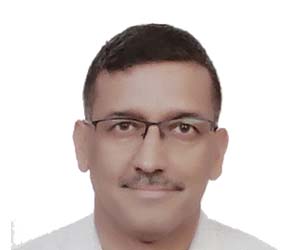
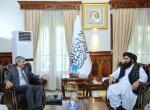

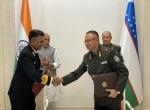

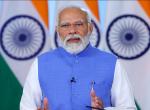
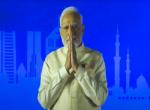


Post new comment